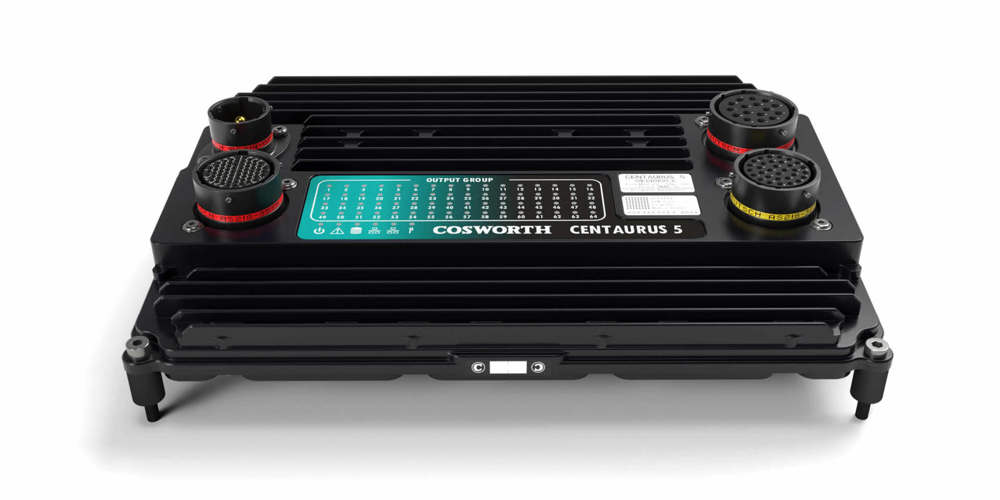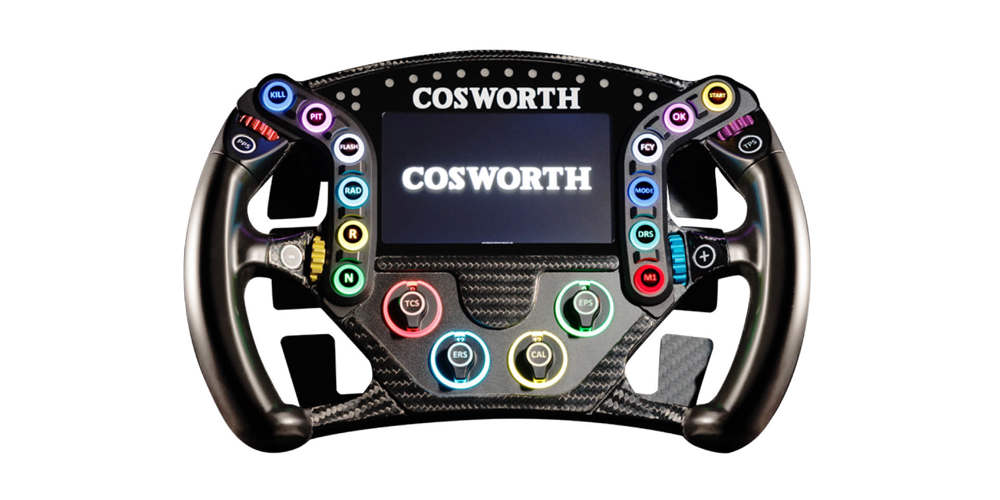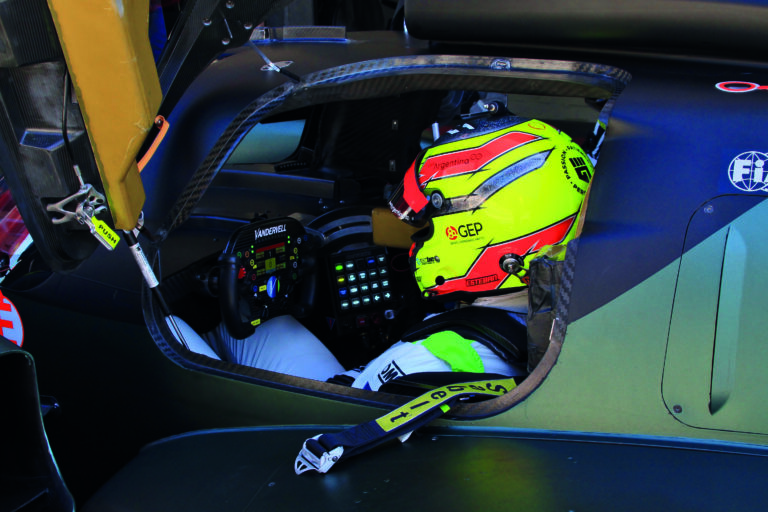Integration is key to the competitiveness of any contemporary GT or sports car, particularly customer cars, and nowhere is this more the case than electronics systems. Though it is possible to mix and match components from different suppliers, a single source results in a more coherent design, greater ease of use and, importantly, lower lifetime costs in terms of serviceability. Cosworth’s electronics system architecture looks to meet this need, providing manufacturers with a full range of control systems that provide the flexibility to cater for the gamut of machinery, from traditional ICE-powered GT3s to top-level Le Mans Hypercars.
At the heart of the concept are the company’s Antares ECU and Centaurus 5 power management system. “The ECU, Antares, is a complex compute module with a primary function to control the engine. But it also possesses the capability to log all vehicle data, run complex customer-built Matlab models, manage complete vehicle system communication and much more,” explains Harry Spence, senior applications engineer at Cosworth. “The Centaurus, meanwhile, is a 12V power control module that provides power to all systems on the vehicle with intelligent current monitoring and advanced debug capabilities. Centaurus is used on all the LMDh cars and has proved popular because of its capabilities; it has 64 outputs, which are all FPGA fused, along with highly flexible and powerful strategies all available to the end user in a simple toolchain.”

This functionality can all be accessed via steering wheel controls, using a team’s preferred means, be that a thumbwheel, button or paddle. “Having Centaurus paired with the CCW Mk3 [Cosworth’s latest carbon steering wheel, which interfaces seamlessly with its other systems] gives us not only the flexibility within that ecosystem to control all the devices on the car, but also the reliability you need in endurance races.”
In the case of Vanwall Racing, which uses the entire suite of Cosworth electronics in its 680 Le Mans Hypercar, Centaurus and the CCW Mk2 also integrate with the Antares ECU, which handles all functionality of the Gibson GL458 V8. “We can also support hybrid systems with Antares, and as part of the ecosystem we can achieve that overall control as a vehicle control unit,” adds Spence.

For customers, a single electronics supplier brings a host of benefits. A single point of contact for issue tracking and resolution ensures minimum downtime and maximum reliability of the system as the full architecture can be crafted by Cosworth and the customer. The single-supplier approach also ensures that end-to-end diagnostics are available without the challenge of responsibility being split between two component suppliers.
“We are also able to support in the setup stages. Many of the things that get reported to us aren’t necessarily issues with the products. It’s the implementation with all the other devices because these are now such a complex network,” explains Spence. “Having full visibility from start to finish with people like Vanwall is a great opportunity and enables the end result to be a well-developed, professional system.”
Race cars are going to get more complex. Thus, an approach that takes the burden away from a team’s engineers can only be a good thing. In the case of Cosworth’s offerings, teams can achieve more with fewer individual pieces of hardware, with the added benefit of all data being available in a single toolchain to improve operational efficiency.
In Spence’s opinion, companies must be much more than component suppliers: “The key here is, we’re a solutions provider. For me, that means we don’t sell you a black box. That means we supply you with a complete system that we can help design and commission from start to finish. With a new car build, there is always a detailed and complex testing period, but when running a fully integrated system like ours, we are able to assist and provide understanding at every level.”



